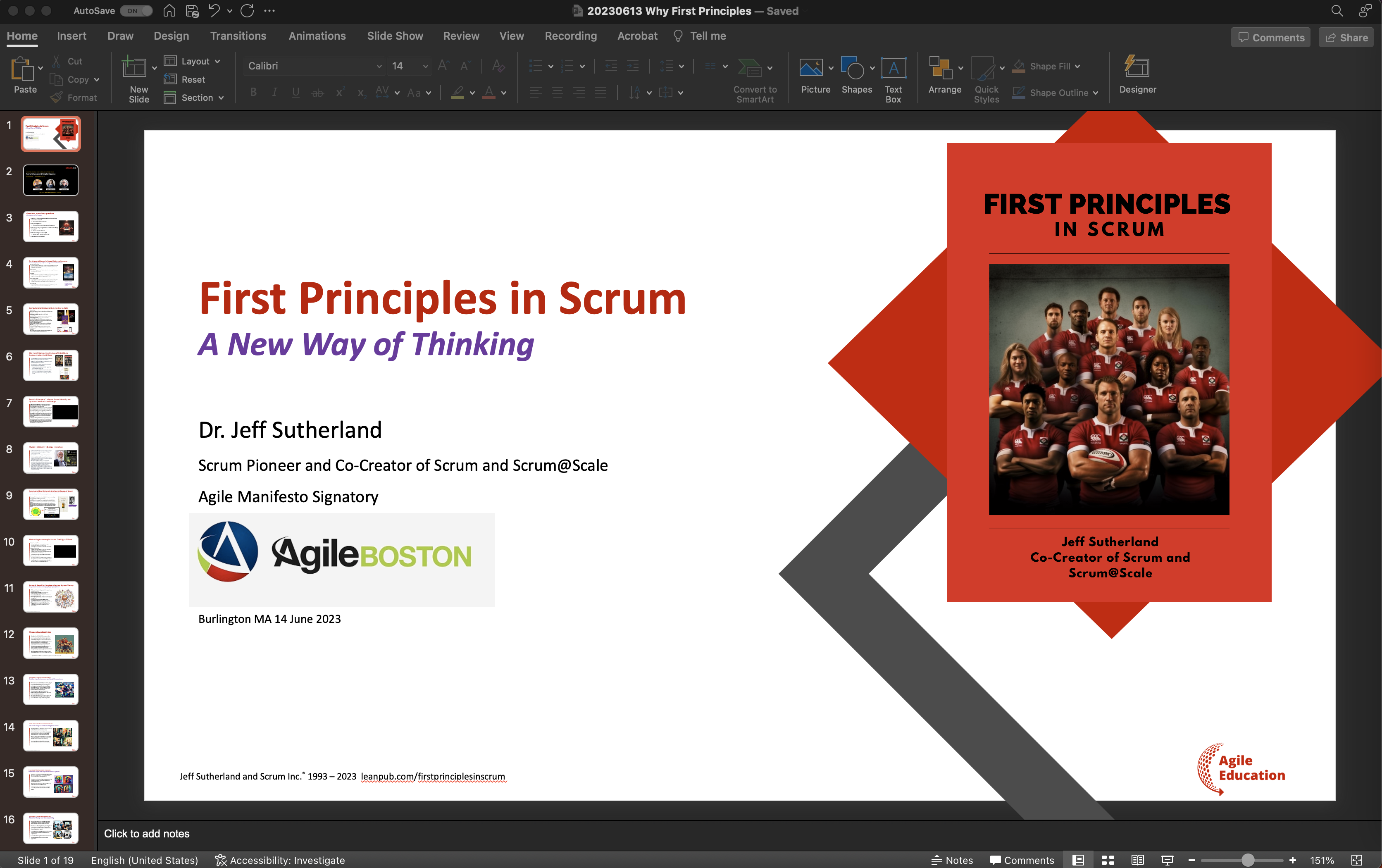Harnessing the Skies and Cells: The Revolutionary Convergence in Scrum Driving projects with the precision of fighter pilots and the adaptability of cellular biology Project management is a rapidly evolving landscape, constantly embracing methodologies from diverse domains. One such pioneering framework, Scrum, has magnificently mirrored the precision of fighter pilots and the intricate resilience of cellular biology. How, you ask? It’s all thanks to the fascinating Free Energy principle. When the Sky Meets the Cell: An Overview At the heart of Scrum lies a convergence of two seemingly disparate domains: the high-octane world of fighter pilots and the microscopic realm of cellular biology. These domains intertwine seamlessly under the Free Energy principle, emphasizing a profound mantra: Minimize surprise and maximize prediction. Jeff Sutherland, an adept pilot, can attest to this. Having faced the perils of North Vietnam’s treacherous airspace in the RF-4C, he gleaned invaluable agility insights from his cockpit experiences. These lessons would later inform his approach to Scrum. Fighter pilots, like those navigating the RF-4C at a staggering 633 knots, have to anticipate their next move – predicting their path and minimizing surprises – resonating perfectly with the Free Energy principle. Parallelly, our cells, nature’s microscopic marvels, operate on the same core principle. Their survival hinges on their ability to predict their environment and minimize any disruptive surprises. This principle finds a harmonious echo in Scrum’s adaptive cycles. Scrum’s Advantage: The Best of Both Worlds By synergizing the anticipative prowess of fighter pilots with the adaptive capabilities of cells, Scrum presents a revolutionary approach to project management. Scrum’s iterative cycles, akin to cellular adaptation, propel teams towards continuous improvement, all while keeping surprises at bay. For Scrum Masters, this synthesis presents a treasure trove of strategies. Here are a few actionable insights: In a world where project hiccups are the norm, Scrum, enriched by the principles of the skies and cells, offers a paradigm shift. The roadmap to project hyperproductivity is ready – it’s time to embark on this transformative journey. For those unfamiliar with the nuances of Scrum, it’s advised to read “Scrum: The Art of Doing Twice the Work in Half the Time” by Jeff and JJ Sutherland. And for those seeking deeper insights, consider exploring “First Principles in Scrum.”
Author Archives: serhii.semeniuk
Unleashing the Power of Scrum: A Deep Dive into its First Principles
Hello, Agile enthusiasts! We have an exciting treat for you today. Jeff Sutherland, a leading coach and consultant on Scrum and Scrum@Scale, has recently shared a riveting presentation that delves deep into the foundational concepts of Scrum. We are thrilled to share the insights from this presentation and provide you with a link to the slides that many of you have been asking for. Jeff’ ‘s new book, available for download at leanpub.com/firstprinciplesinscrum, is not just another guide to Scrum. It explores the first principles that make Scrum a powerful tool for managing complex projects. The insights, strategies, and practical wisdom it offers are drawn from discussions with Registered Scrum Trainers worldwide and Jeff’s wealth of experience and knowledge. One of the key takeaways from the presentation is the concept of punctuated equilibrium. This concept, central to Scrum’s effectiveness, posits that species experience long periods of stability, punctuated by brief periods of rapid change. In the context of Scrum, this is reflected in the iterative development process where teams work in short, time-boxed iterations known as sprints, each resulting in a potentially shippable product increment. The presentation also highlights some common pitfalls that organizations encounter when implementing Agile, such as focusing on the mechanics of Agile without fully embracing transparency, inspection, and adaptation, and failing to adapt the performance management system to support Agile teams. In addition, the presentation draws parallels between the binary nature of matter and the binary nature of computer technology, suggesting that complex structures and phenomena can be created from the binary pair of inward and outward quantum waves. This presentation is a treasure trove of insights for both beginners and seasoned practitioners. It covers a wide range of topics, from the basics of Scrum to advanced concepts, and offers actionable strategies and techniques you can use to improve your Scrum practice. Don’t miss out on this opportunity to deepen your understanding of Scrum and enhance your Agile practice. Check out the presentation and let us know your thoughts!


